USING A THEORY OF CHANGE TO LEARN ACROSS CONSERVATION ENTERPRISES
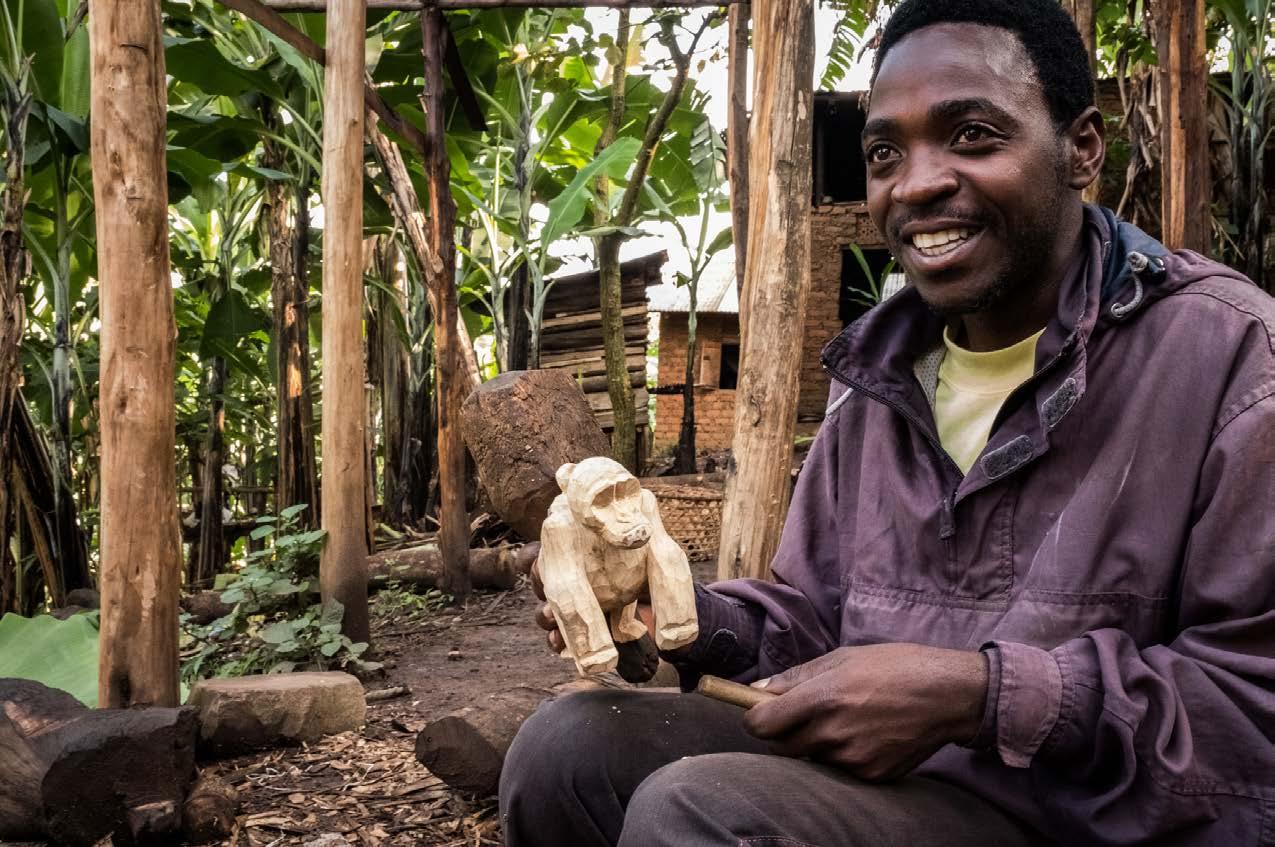
Citation: Boshoven, J., Leeper, K., Harivelomanana, M., Lalaharimanitra, H., Rabefarihy, H., Randrenallijaona, F., Ratsisompatrarivo, J.S., … Hill, M. (2021, July). Using a Theory of Change to Learn Across Conservation Enterprises. Poster Session developed and presented virtually at the Conservation Enterprises Impact Lab.
Full list of authors: Judy Boshoven, Kyia Leeper, Miora Harivelomanana, Holisoa Lalaharimanitra, Hanta Rabefarihy, Fanja Randrenallijaona, Jean Solo Ratsisompatrarivo, Agathe Sector, Chrispine Botha, Alan Brooks, Oscar Artiga Chacon, William Dothi, Dziko Malonje, Bruce Sosola, Berenice Brizuela, Jose Chero, Alvaro Gaillour, Paul Ramírez, Jesua Reyna, Marioldy Sanchez, Richard Oluka, Margaret McMorrow, Robert Bagyenda, Jennifer Talbot, Juraj Ujházy, Rose Chipfupa, Cary Farley, Kevin Fox, Tawanda Makawa, Ronald Ruybal, Cryton Zazu, Megan Hill

FOR USAID
JAONS HOUSTON
SUPPORTING THE ENABLING CONDITIONS FOR ENTERPRISES AS AN ALTERNATIVE TO SLASH-AND-BURN AGRICULTURE
ENTERPRISE TYPES
• Sustainable production of cocoa, spices, essential oils, peanuts, and vanilla
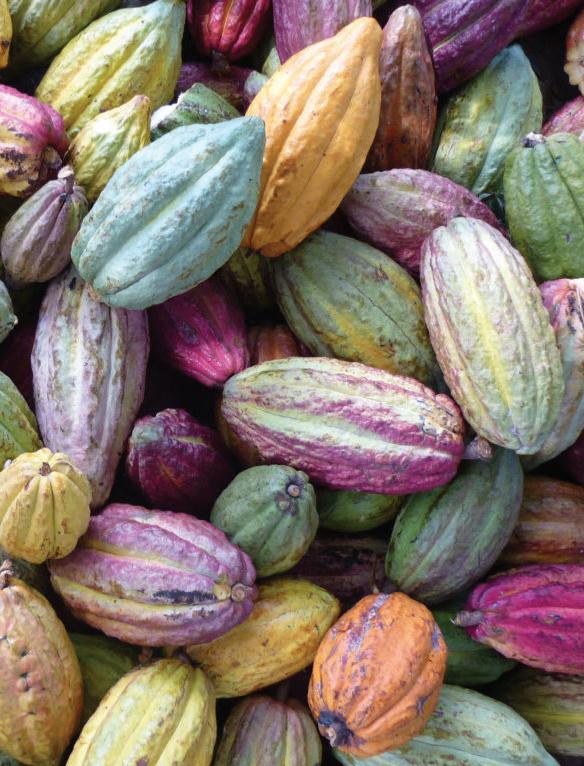
• Agroforestry
• Seaweed farming
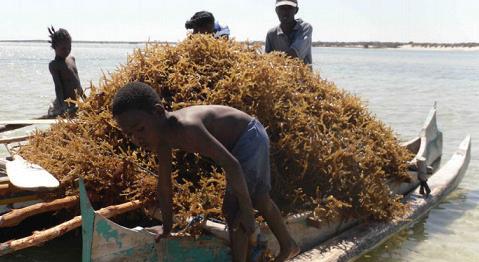
• Ecotourism
• Jam production
• Beekeeping and honey production
• Baobab cultivation and harvesting
• Handicrafts
• Market gardening
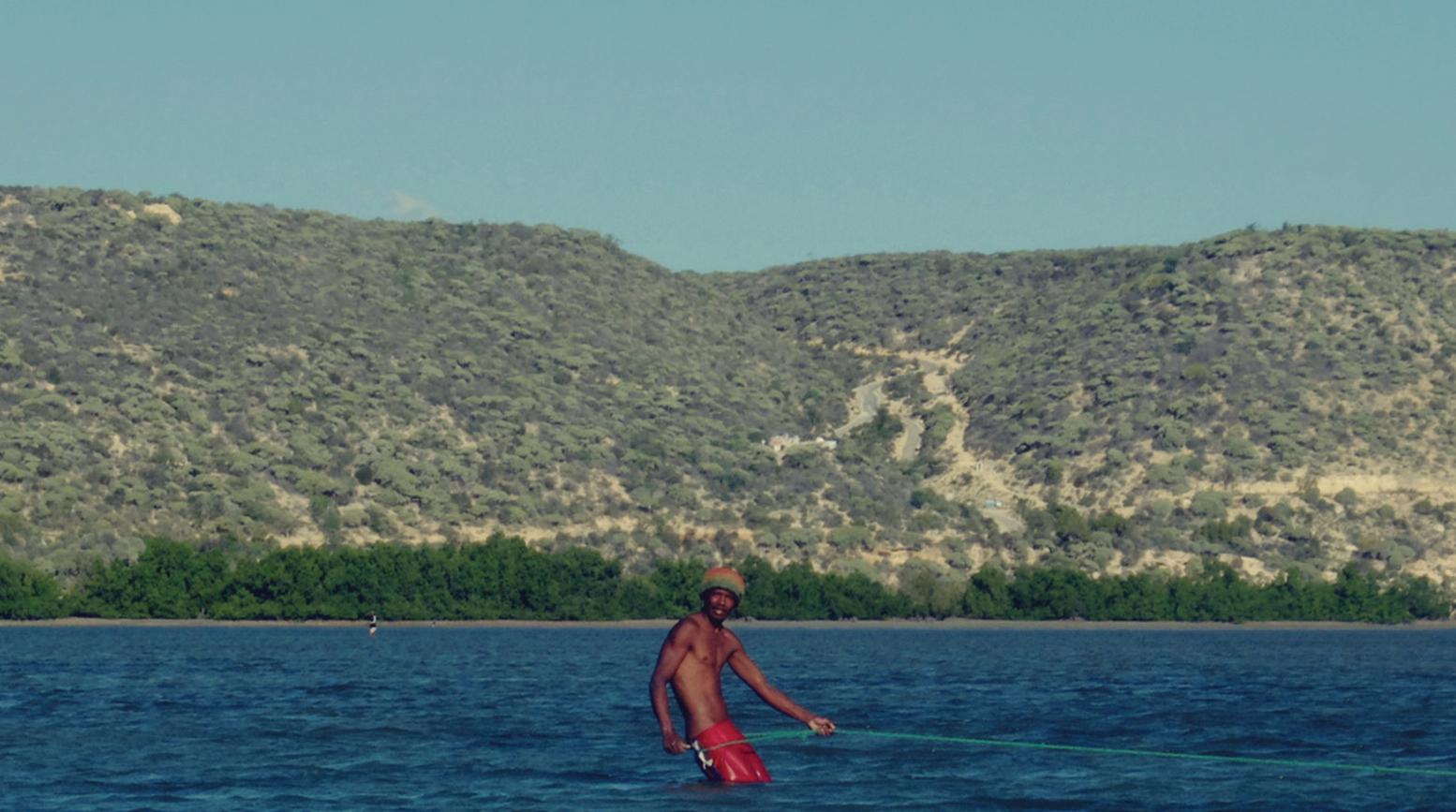
Conservation Enterprise Approach
For the past two years, the USAID Hay Tao activity has supported national laws, building the capacity of conservation entrepreneurs, and developing sustainable business models. They will be working within three regions in Madagascar and with 19 cooperatives in coordination with the government.
THEORY OF CHANGE
Support Conservation Enterprises
Enabling Conditions in Place for Enterprises
Benefts Realized by Stakeholders
ASSUMPTION
Partners support the enabling conditions for the cooperatives:
• National legal framework
• Capacity development
• Business models and plans
• Market linkages
• Mechanism of return on investment to the conser vation of biodiversity
ASSUMPTION
By building the enabling conditions, cooperatives have technical capacity, markets, traceability, and certifcation systems in place to generate revenues. Participation grows within enterprises as a result of convertible grants.
WHAT IS MEASURED & HOW
Partners track progress on the national legal framework for conservation enterprises.
Partners conduct key informant interviews with entrepreneurs and other partners on markets, return on investment to communities and conservation, and revenues.
KEY LESSONS
The national platform of stakeholders is effective at supporting national law on social and conservation enterprises.
Cooperatives need more support on value addition and certifcation.
ASSUMPTION
Enterprise stakeholders have increased income from selling goods and services. Community members have income from selling raw materials to enterprises.
WHAT IS MEASURED & HOW
Partners conduct inter views with stakeholders regarding changes in income from enterprises.
KEY LESSONS
Cooperatives need to have beneft sharing mechanisms in place. The price of vanilla is fxed by the government, which limits the income.
Stakeholders’ Attitudes and Behaviors Changed
ASSUMPTION
Enterprise stakeholders raise awareness and allocate a part or majority of their profts to ensure the sustainable management of the resources by the community. Community members, as enterprise partners, do not practice slash-and burnagriculture and sustainably harvest raw materials for enterprises.
WHAT IS MEASURED & HOW
Partners directly observe the extent of collaboration between the enterprises and the local community.
KEY LESSONS
nterprises need an explicit echanism to reinvest profts for he management of community esources as inputs to the nterprise (e.g., fruit, raffa).
Threat Reduction or Restoration ASSUMPTION
Overharvesting of forest resources and deforestation from slash-and-burn agriculture are reduced.
WHAT IS MEASURED & HOW Partners conduct feld visits to directly observe the extent of slash-and-burn agriculture.
SOURCES
•
• Ministry of Industry, Trade and Handcraft/One District One Factory Project team (Ulrich Ramiandrasoa, Legal and Economic Studies Offcer and Tsimbina Andrianaivo, National Coordinator of One District One Factory Project)
Biodiversity Conservation ASSUMPTION
WHAT IS MEASURED & HOW Partners use Global Forest Watch to monitor forest cover.
KEY LESSONS
It is too early in implementation to detect changes in forest cover.
Seaweed harvesting © USAID Hay Tao activity
E m t r e
MADAGASCAR
Miora Harivelomanana (USAID Program Specialist), Holisoa Lalaharimanitra (Gender & Youth Specialist, USAID Hay Tao), Hanta Rabefarihy (Deputy Contracting Offcer’s Representative, USAID Hay Tao), Fanja Randrenallijaona (Deputy Chief of Party, USAID Mikajy), Jean Solo Ratsisompatrarivo (Chief of Party, USAID Hay Tao), Agathe Sector (Contracting Offcer’s Representative, USAID Hay Tao)
USAID Hay Tao Mission trip reports and training reports at Menabe landscape (Holisoa Lalaharimanitra, Gender & Youth Specialist; Arson Randria, Advocacy Offcer; Holly Rakotondralambo, Project Offcer)
Cocoa pods © USAID Hay Tao activity
Forest cover is maintained or increased.
Background photo: Seaweed farmer near Anakao, Madagascar © Maria Abragan
ENTERPRISE TYPES
• Agroforestry for cocoa production
• Forest plantations
• Timber harvesting
• Shiringa rubber harvesting
• Handicrafts
SUPPORTING INDIGENOUS COMMUNITIES TO PRODUCE FOREST AND AGROFORESTRY PRODUCTS
IN THE AMAZON
Conservation Enterprise Approach
Since April 2019, USAID partner AIDER, through implementation of the Forest Alliance initiative, has supported seven Indigenous communities in the Peruvian Amazon to sustainably produce forest and agroforestry products. In these communities, 18 producer committees, each with 15 to 60 members, organize and sell products to the Indigenous-run company Nii Biri.

THEORY OF CHANGE
Support Conservation Enterprises
Enabling Conditions in Place for Enterprises
ASSUMPTION
Partners support the enabling conditions for committees to provide products to the Nii Biri company, including:

• Training on technical aspects of production, communal governance, business management, and compliance with regulations
• Providing materials and inputs
Partners support the Nii Biri company, including:
• Training in production, administrative, and commercial areas
• Promoting market linkages and commercial agreements
• Supporting communal land and forest tenure for communities
ASSUMPTION
By building the enabling conditions, committees have the capacity to sell products to Nii Biri, generate revenues, and engage participants over time.
WHAT IS MEASURED &
HOW Par tners directly observe productive community operations and review committees’ and Nii Biri’s monthly production and sales reports.
KEY LESSONS
Developing a business culture in Indigenous communities is a key enabling condition and is a long-term process. Nii Biri needs the capacity to adapt quickly to market changes.
ASSUMPTION
Selling products to Nii Biri provides increased and more stable income to communities (not only committee members).

Communities also receive additional income from selling carbon credits.
WHAT IS MEASURED & HOW
Par tners conduct a sur vey of community members for a change in household income and non-monetary benefts.
KEY LESSONS
More community members recognize the importance of the enterprise because they have increased income.
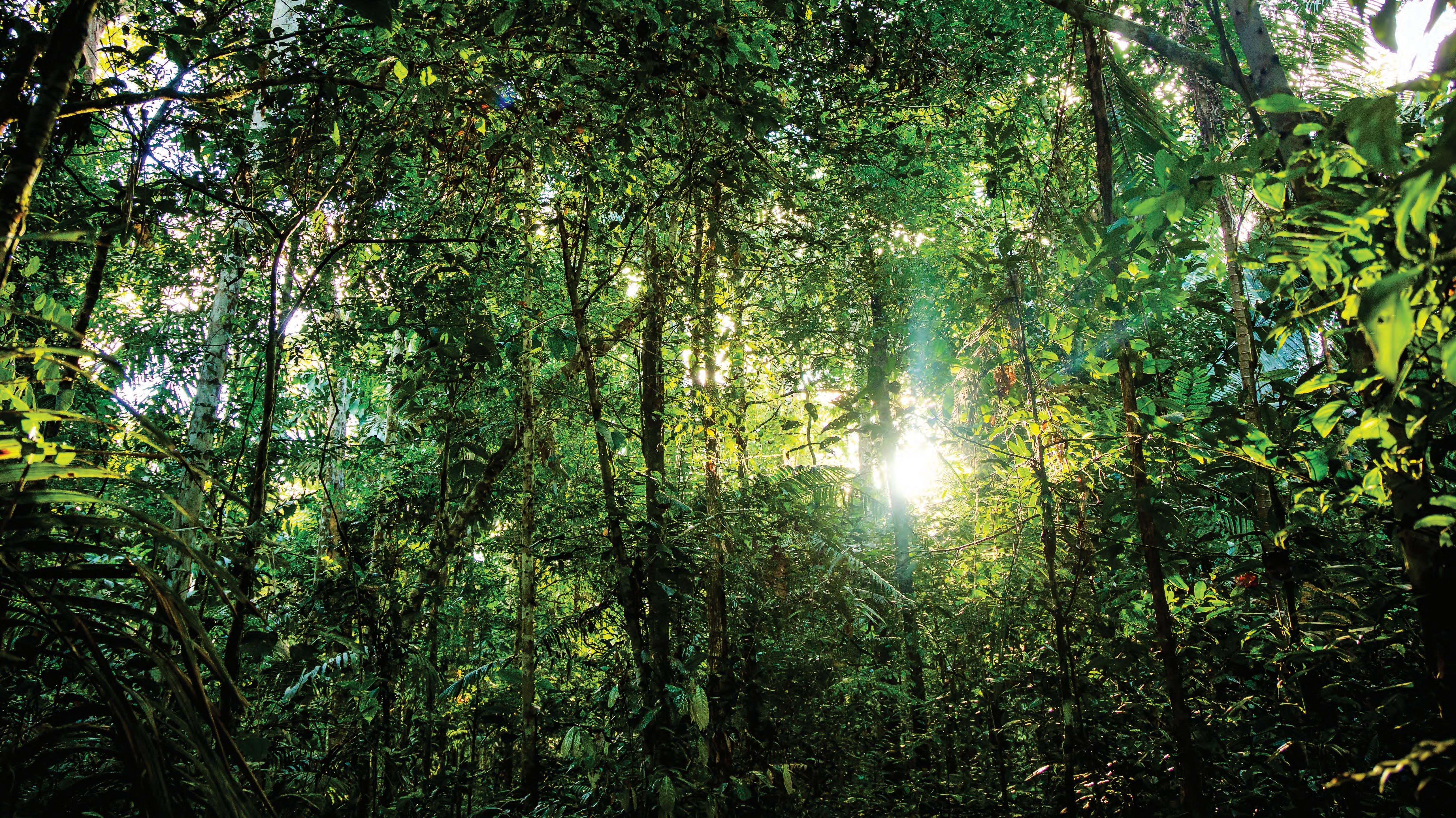
Stakeholders’ Attitudes and Behaviors Changed ASSUMPTION
Communities are aware of the value of managing the forest for enterprise sustainability.
Committees channel part of their enterprise revenues to communal forest management, per Forest Stewardship Council (FSC) standards, and monitor and report illegal activities to authorities.
WHAT IS MEASURED & HOW
Par tners sur vey community members about their attitudes toward the value of managing the forest for enterprise sustainability.
Partners also observe and interview members regarding forest management, per FSC, and regarding illegal activity monitoring and reporting.
KEY LESSONS
A woman from the Shipibo Conibo Indigenous Peoples inspects textiles that she will sell to Nii Biri
There is a need to improve community members’ perceptions about the existence and infuence of monetary and non-monetary benefts from forest conservation.
Threat Reduction or Restoration ASSUMPTION
There is no deforestation in participating communities from slash-and-burn agriculture, outsiders’ grabbing land, or illegal loggers.
WHAT IS MEASURED & HOW
Par tners conduct remote forest monitoring of clearing incidents and directly observe and interview community members regarding incidents of threats.
KEY LESSONS
Slash-and-burn agriculture by communities is a minor threat relative to land grabbing or illegal logging by outsiders. Informal channels (e.g., word of mouth) is an important information source for monitoring and reporting illegal activities.
Biodiversity Conservation ASSUMPTION
Indigenous communities maintain 120,000 hectares of Amazonian forest and avoid greenhouse gas emissions on lands they manage.
WHAT IS MEASURED & HOW
Par tners conduct remote forest monitoring of changes in forest cover.
KEY LESSONS
Early warning systems that combine remote monitoring and community-based monitoring are effective for communities to avoid or reduce deforestation from invaders, but government response is still required.
PERU AIDER
manejado ¡Futuro asegurado!
Berenice Brizuela (Business Specialist, Forest Alliance - AIDER), Jose Chero (Environmental Specialist, Forest Alliance - AIDER), Alvaro Gaillour (USAID Agreement Offcer’s Representative, Forest Alliance), Paul Ramírez (Investment Offcer, Forest AllianceMirova Natural Capital), Jesua Reyna (Economic Specialist, AIDER), Marioldy Sanchez (Project Manager, Forest Alliance - AIDER)
Bosque
© AIDER-Forest Alliance
Benefts Realized by Stakeholders
Background
photo: TAMU Applied Biodiversity Sciences Amazon Field School on the Tambopata River in the Peruvian Amazon © Joseph King
ENTERPRISE TYPES
Beehive fences and honey production
SUPPORTING BEEHIVE FENCES AND HONEY PRODUCTION TO REDUCE HUMAN-WILDLIFE CONFLICT NEAR PROTECTED
AREAS
Conservation Enterprise Approach
•
•
•
•
THEORY OF CHANGE
Support Conservation Enterprises



Enabling Conditions in Place for Enterprises
Benefts Realized by Stakeholders
ASSUMPTION
Partners support communities to participate in enterprises, including:
• Constructing beehive fences to stop elephants from crossing into crop felds

• Training in modern apiary management
• Providing modern apiary equipment
• Providing access to credit and capital through Village Savings and Loans Associations (VSLAs)
• Developing market linkages
ASSUMPTION
Enterprise groups within communities construct beehive fences, produce and sell honey, and generate revenues. The revenues are saved in VSLA groups, from which the group members can borrow loans for investment to generate more revenue.
ASSUMPTION
Beehive fences reduce humanwildlife confict and improve food security in communities. Selling honey provides income to enterprise participants and acts as capital for further investment.
WHAT IS MEASURED & HOW
ASSUMPTION
Community members do not engage in retaliatory killings of wildlife and report illegal wildlife activities to park authorities.
WHAT IS MEASURED & HOW
Threat Reduction or Restoration ASSUMPTION
Retaliatory killings of wildlife and other illegal wildlife activities in and around Karuma Wildlife Reserve and Murchison Falls Protected Area are reduced.
Biodiversity Conservation ASSUMPTION
Populations of wildlife (e.g., elephants) are maintained around the Murchison Falls Protected Area.
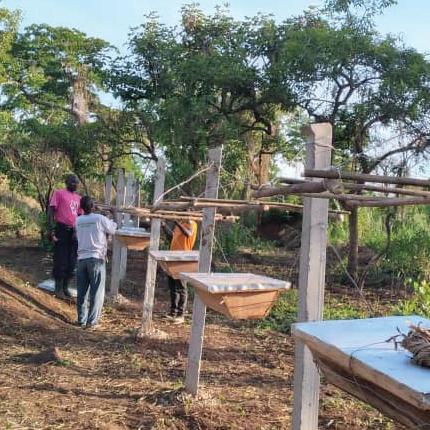

WHAT IS MEASURED & HOW
IS MEASURED & HOW Partners conduct surveys and focus group discussions with beekeeping groups regarding enterprise conditions and conduct interviews with Karuma Wildlife Reserve staff involved in monitoring.
WHAT
Partners conduct focus groups, interviews, and household socioeconomic surveys regarding community benefts at the activity baseline, midterm, and end-term.
KEY LESSONS
Hives are producing honey and being harvested for household consumption.
Partners conduct focus groups, interviews, and household socioeconomic surveys at the activity baseline, midterm and end-term regarding attitudes and behaviors, including relationships with authorities and involvement of the community in reporting illegal wildlife activities to authorities.
WHAT IS MEASURED & HOW
Uganda Wildlife Authority tracks illegal wildlife activities using the Online Wildlife Offenders Database. Partners use the Management Information System to track data on incidents of retaliatory killing and other illegal wildlife activities at the park level.
Uganda Wildlife Authority tracks populations of wildlife.
KEY LESSONS
Others beyond the enterprise stakeholders (e .g., other National Wildlife Crime Coordination Task Force member institutions) need to be on-board to achieve biodiversity outcomes.
KEY LESSONS
Groups are committed to constructing the fences. Providing continuous and close support to communities during implementation promotes commitment, dedication, and ownership of the enterprises, promoting sustainability.
KEY LESSONS
Communities are hesitant to report crime to authorities due to fear of being targeted by the criminals; they need to be guaranteed of their safety. There is a need for an Informant Risk Management Plan.
KEY LESSONS
Involving communities and authorities in all inter ventions is key to building trust and promoting sustainability of threat reductions. Data management procedures for the Uganda Wildlife Authority’s Online Wildlife Offenders Database need to be strengthened to improve the quality of data generated.
UGANDA
Richard Oluka (Monitoring, Evaluation, and Learning Manager, USAID CWC), Margaret McMorrow (Agreement Offcer’s Representative, USAID CWC)
SOURCES
In the frst half of 2021, the USAID Combating Wildlife Crime (CWC) activity supported three enterprise groups, of about 15 members each, in communities around Karuma Wildlife Reserve in Uganda’s Murchison Falls Protected Area.
Group VSLA records
Annual and quarterly progress reports
Routine activity reports
Baseline, midterm, and end-term evaluation reports
Beehive
fence © USAID CWC activity
Stakeholders’ Attitudes and Behaviors Changed
Background photo: Elephants in Murchison Falls National Park © Brian Harries
SUPPORTING ENTERPRISES TO INCREASE COMPLIANCE FOR SUSTAINABLE RESOURCE USE WITH COMMUNITY GROUPS
ENTERPRISE TYPES
• Ecotourism
•
•
•
•
• Livestock
THEORY OF CHANGE
Enabling Conditions in Place for Enterprises
ASSUMPTION
Partners suppor t communities to participate in enterprises, including:


• Training, equipment, market linkages for all enterprises
• Detailed guidance on how to achieve community-wide conservation compliance, including generation of funds for conservation (e.g., for conservancy management)


• Governance advisory to link enterprises with communitybased conservation structures (e.g., conservancies, CFMs)
ASSUMPTION
Enterprise groups within communities produce, market, and sell goods and generate revenues through long-term partnerships with the private sector. CFMs, conservancies, and supporting structures such as CWAs and CWSs are well governed to manage funds. More scale is achieved with ongoing investment.
ASSUMPTION
Selling products provides income to enterprise participants and funds for conservancies, CFMs, CWAs, and CWSs. There is better conservation management and less human-wildlife confict because conservation impact plans are embedded in each enterprise.
Stakeholders’ Attitudes and Behaviors Changed ASSUMPTION
Community members comply with conservation agreements: They do not retaliate against wildlife; they report other infractions to authorities; they sustainably harvest forest products; and they do not encroach on habitat in the buffer areas around protected areas.
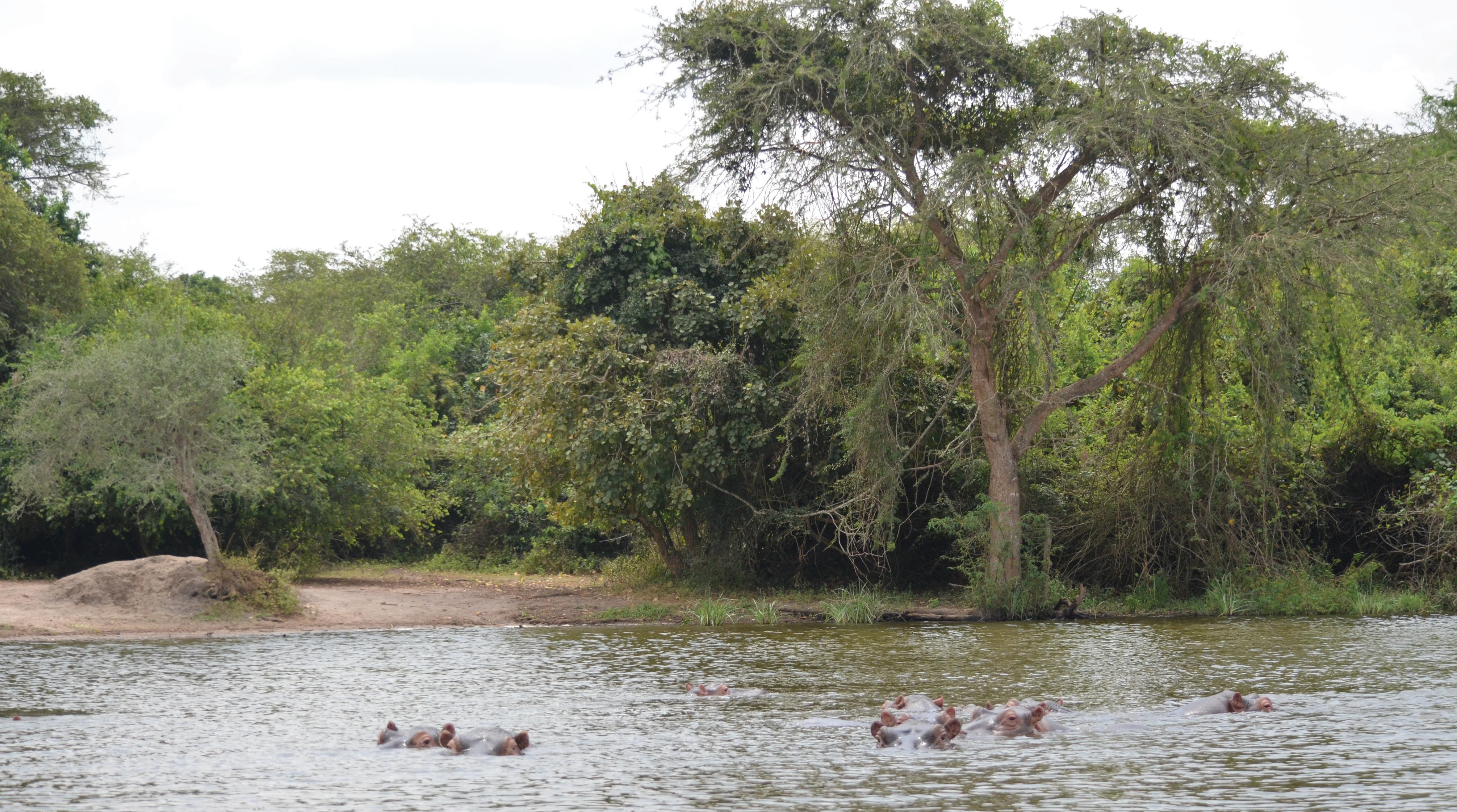
Threat Reduction or Restoration ASSUMPTION
Unsustainable resource harvesting, unsustainable agricultural practice, encroachment, poaching, overgrazing, and uncontrolled fres are reduced.
WHAT IS MEASURED & HOW
Biodiversity Conservation ASSUMPTION
Target ecosystems (forests, woodlands, grasslands, wetlands) and species (elephants, lions, hippos, chimpanzees) are maintained or increased in target landscapes.
WHAT IS MEASURED & HOW
IS MEASURED & HOW Par tners implement tools, such as the Conservancy Roadmap, and conduct surveys and focus group discussions with enterprise groups regarding capacity to produce and sell products.
WHAT
WHAT IS MEASURED & HOW Partners review private partner and other stakeholder reports and conduct household socio-economic surveys regarding community benefts.
KEY LESSONS
KEY LESSONS
Clear structure is needed upfront to understand roles, responsibilities, and beneft sharing.
Addressing communities’ needs (e.g., reducing human-wildlife confict) is the entry point in conservancies to build relationships, but this may not lead to conservation behaviors without other support. The beneft sharing model needs to be tailored to each specifc part of a landscape (e.g., whether it is managed by a conservancy or a community forest reserve).
WHAT IS MEASURED & HOW Par tners track progress on the Conservancy Roadmap by monitoring performance of the partner stakeholders (e.g., conservancies, CFM groups). Partners also conduct focus group discussions, key informant interviews, and household socio-economic surveys regarding attitudes and behaviors, including relationships with authorities and involvement of communities in reporting crime to authorities.
KEY LESSONS
Different attitudes can be expected by different ethnic groups, depending on their livelihoods, types of land ownership, and cohesiveness. Many stakeholders do not yet understand the need to invest back into conservation.
Par tners track data from government agencies (e.g., Uganda Wildlife Authority, National Forestry Authority), community-based institutions (e.g., CWAs, CWSs, CFMs), and private sector partners.
KEY LESSONS
Community-based enforcement (e.g., scouts, forest patrols) needs to operate in conjunction with other stakeholders (e.g., CWAs, Uganda Wildlife Authority, National Forestry Authority) to achieve landscape-wide conservation results. Awarenessbuilding by local champions and elders is also needed to support threat reduction.

Partners will monitor some species distributions and populations through ecological monitoring by community wildlife scouts.
KEY LESSONS
Community scouts require training and suitable technology to conduct ecological monitoring.
UGANDA
Robert Bagyenda (Agreement Offcer’s Representative, Uganda Biodiversity Trust Fund and B4R), Jennifer Talbot (Chief of Party, B4R), Juraj Ujházy (Private Sector Engagement Advisor)
Organic/Climate-smart agriculture
Forest enterprises, including agroforestry, honey, and sustainable charcoal production
Wildlife-based enterprises
Renewable energy
Conservation Enterprise Approach Biodiversity for Resilience (B4R) supports community-based conservation management through entities such as conservancies, community wildlife associations (CWAs), collaborative forest management groups (CFMs), and community wildlife scout groups (CWSs). Geographical focus is on conservancy establishment in the Kidepo Valley, Murchison Falls, and Lake Mburo landscapes, as well as in Budongo Forest and forest reserves in the greater Kidepo Valley Landscape.
Support Conservation Enterprises
Female rangers at Murchison Falls National Park © USAID B4R activity
Benefts Realized by Stakeholders
Background photo: Hippos at Lake Mburo National Park © Kent MacElwee




















